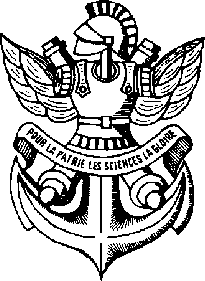 Ecole Polytechnique
Ecole Polytechnique
 Ecole Polytechnique
Ecole Polytechnique

 Ecole Polytechnique
(French: "Polytechnic
School"), engineering school located originally in
Paris but, since 1976, in Palaiseau, Fr., and directed by
the Ministry of Defense. It was established in 1794 by the
National Convention as the École Centrale des
Travaux Publics ("Central School of Public
Works") under the leadership of Lazare Carnot and
Gaspard Monge. It took its present name in 1795 and absorbed
the state artillery school in 1802.
Ecole Polytechnique
(French: "Polytechnic
School"), engineering school located originally in
Paris but, since 1976, in Palaiseau, Fr., and directed by
the Ministry of Defense. It was established in 1794 by the
National Convention as the École Centrale des
Travaux Publics ("Central School of Public
Works") under the leadership of Lazare Carnot and
Gaspard Monge. It took its present name in 1795 and absorbed
the state artillery school in 1802.
Originally under the
direction of the Ministry of the Interior, it was
transformed into a military school by Napoleon (1804). In
the past, most graduates became technical officers in the
military forces; today most go into government service or
business. There are faculties of mathematics, mechanical
engineering, physics, chemistry, economics, and humanities
and social sciences.
[Encyclopaedia Britannica, 1994]
The École Polytechnique was founded in 1794, originally to train military engineers. Although still affiliated with the Defense Ministry, its role has gradually changed over the years: present-day ``Polytechniciens'' become researchers, top-ranking Civil Servants, highly qualified engineers, and company directors. It is one of the most prestigious of all French institutions of higher learning.
Incoming students, as was mentioned earlier, are science majors; however, the ``core curriculum'' of mathematics, physics, chemistry, biology, fluid and solid mechanics and computer science, also includes economics and the humanities--philosophy, politics, foreign languages, art and architecture--as well as sports.
Academic training includes lectures and seminars, but also personal projects. Students and faculty are encouraged to develop a personal relationship with one another.
Before starting their second year, all students are expected to accomplish an entry-level internship involving hands-on labor experience. From a pedagogical point of view, this is considered an essential part of the curriculum. At the end of their last year, students choose companies or national research laboratories in which they do a 3 or 4 months work-study research project, 25% of them in foreign countries. At the end of this period they present a short thesis to a panel of professors.
The large majority of graduates complete their studies with a Ph.D. or an equivalent degree in science, technology, economics or business, some at foreign universities.
Indeed, the broad spectrum of their training enables them to specialize in a number of fields.
The École Polytechnique recruits among the best lecturers and professors both for teaching and research. The faculty is comprised not only of scientists of repute, but also of leading writers, journalists, philosophers, economists and politicians. The École Polytechnique also has 24 research laboratories with over 250 doctoral students working alongside 450 professional researchers.
The library, founded in 1794, has extensive collections dating back to the 16th-century (about 10,000 volumes published before 1810) which cover all sectors of contemporary scientific activity as well as the humanities.
Originally situated in Paris, the campus was transferred to a southern suburb of Paris in 1976 where its 380 acres allow for excellent sports facilities including soccer and rugby fields, tennis courts, 2 swimming pools, an artificial lake for sailing as well as riding stables.
This is another outstanding feature of the École Polytechnique, as social life tends to be nonexistent in many French universities. Sports activities are well appreciated and attended at the school. These include all kinds of matches and tournaments (soccer, rugby, fencing, to name a few) but also a 5-day international sailing regatta, a world class 3-day equestrian competition and a 3-day inter-collegiate ski competition.
The students, who all live on campus, organize full programs of entertainment (cinema, theater, music) which draw large audiences from the neighbouring communities. Dozens of student clubs and services are manned by teams with a variety of interests ranging from the ordering of low-cost, high-quality materials (from hi-fi and video to wine) to publishing the students magazine or the more elegant X-Projets and X-Passion magazines which inform the leading companies in the economic community of outstanding activities on campus, including student consultancy projects for major firms. Last year's special project of buying, racing and organizing trips in a hot air baloon is a good example of the students' flourishing imagination and initiative.
Thanks to the BMW Foundation, the WebMuseum mirrors, partners and contributors for their support.